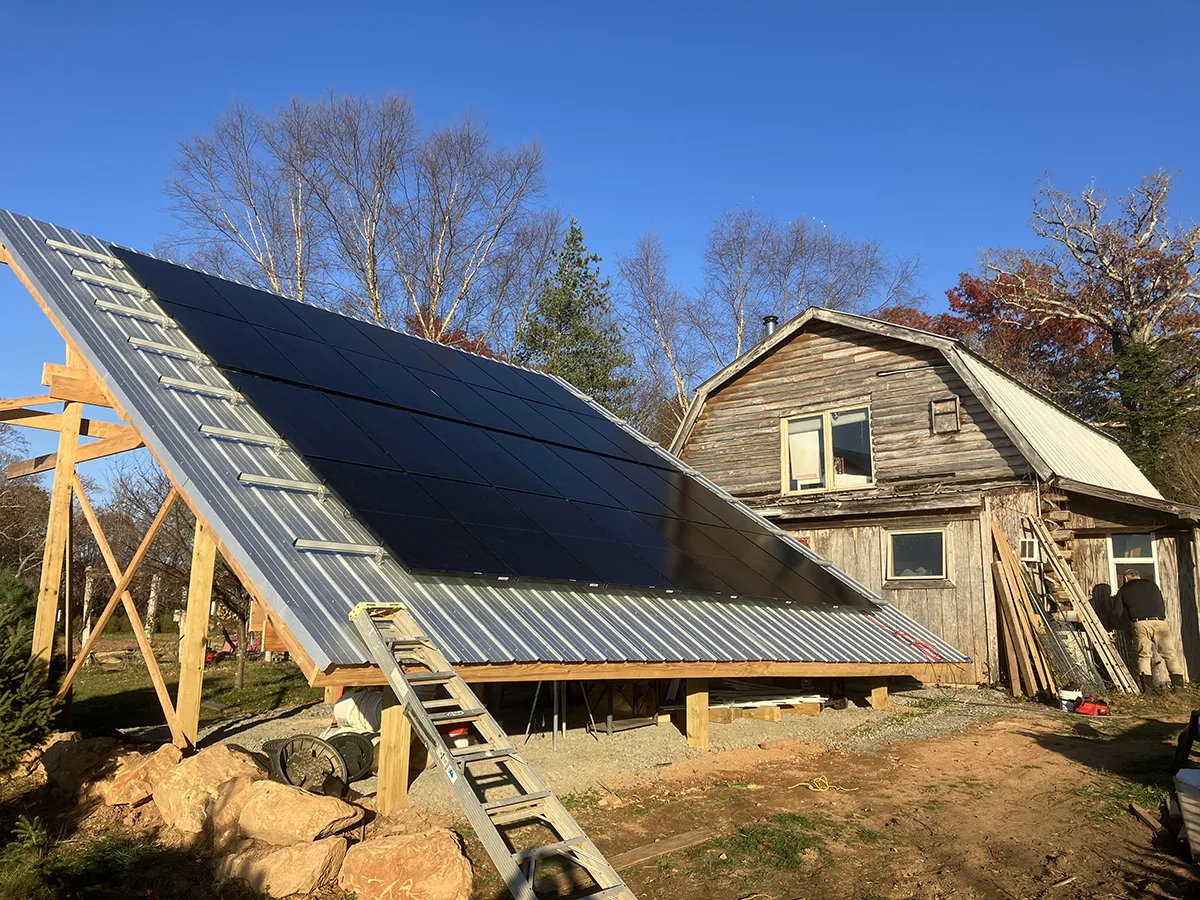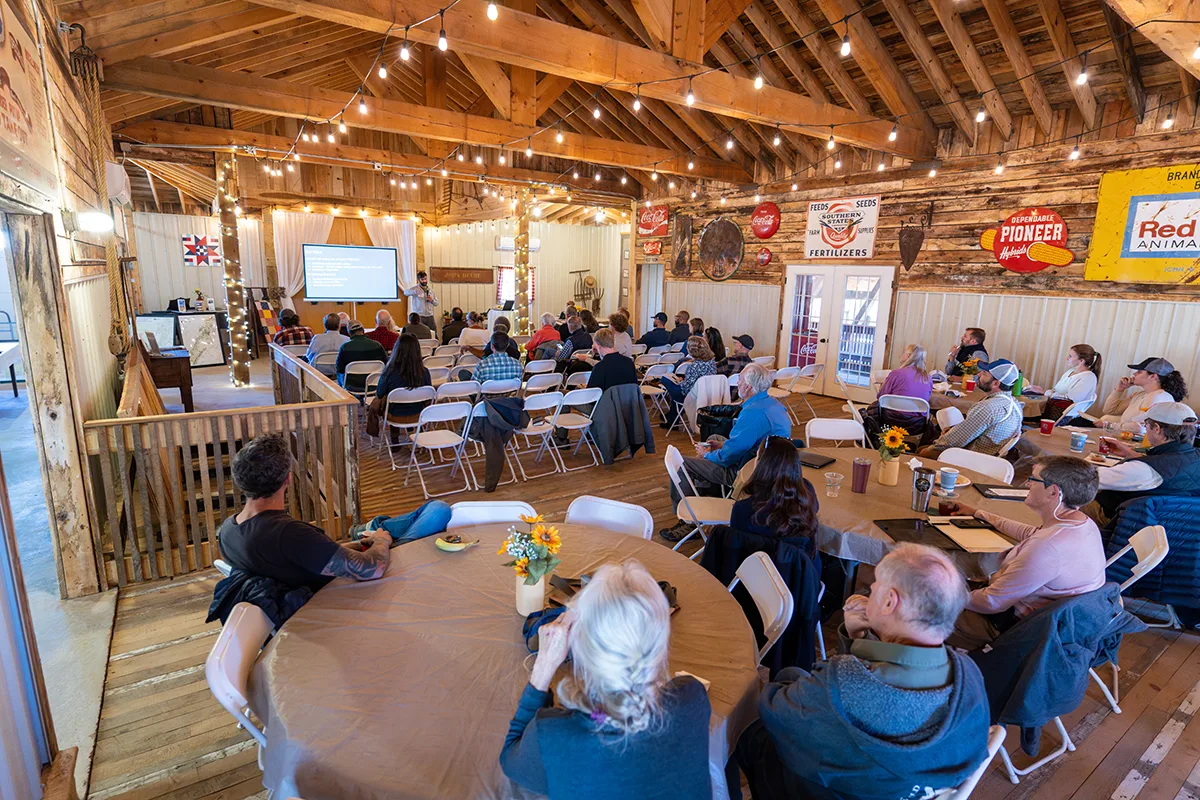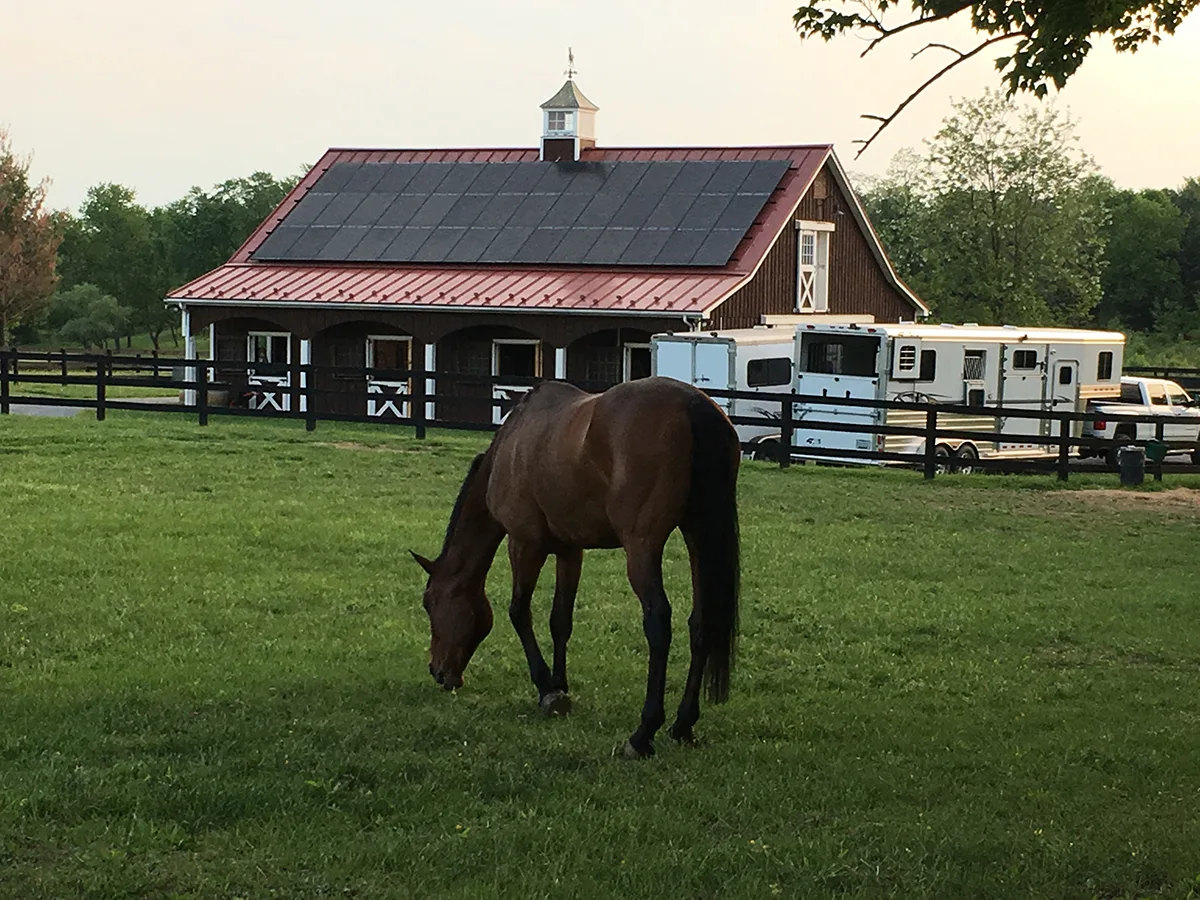Enough sun hits the earth in an hour to power humanity’s electric needs for the entire year. It’s a weathered quote that still retains its impact, regardless of its repetition. While anyone trying to implement such a reality will tell you that it is much easier said than done, many among us have found their own way to contribute to our collective solution. And now, with a USDA Rural Energy for America Program (REAP) paying for up to 50% of a farm’s renewable energy or energy efficiency project, plus the 30% federal tax credit and Solar Renewable Energy Certificate (SREC) revenue, that solar choice is easier than ever.
Robert Ellis, of Clifton Farms in Rixeyville, went the DIY route at his cattle farm and woodshop. Back in 2016, he purchased solar panels, power optimizers, and an inverter, and went to work connecting steel, concrete, panels, and wires to create a ground-mounted system that powers his agricultural well, farmhouse and woodshop. Ellis’ system gives him not only energy independence, but also savings on his electricity bill. He took advantage of the federal tax credit and SRECs and, in the next few years, he will have a full return on investment, with most of his electricity being “free” from that point onward.

Ellis’ system was a hit in his community, and he’s now helping a neighbor who runs a local Christmas tree farm set up a solar system there, too. That neighbor will be able to apply for a REAP grant to cover 50% of his cost and also use the federal investment tax credit for an additional 30% of his remaining cost. He can further support his investment with SRECs, which are awarded for every megawatt hour a user produces and publicly traded at the state’s market rate. An average farm-based solar system can produce thousands of dollars in additional value through these SREC sales.
These incentives, coupled with an increase in demand and the benefits of a distributed solar energy grid, were the focus of PEC’s recent Solar on the Farm event at Kildee Farms in Culpeper, co-sponsored with Culpeper Soil and Water Conservation District, Minority and Veteran Farmers of the Piedmont, and American Farmland Trust. Audience members thoroughly enjoyed a talk by Ellis and Kevin Powers, of Powers Brewery, about DIY and developer-based solar systems on working agricultural enterprises. Solar United Neighbors talked about the REAP program, Sun Tribe Trading explained SRECs, and Tiger Solar explained a typical distributed solar project process.

Audience engagement made the information provided even more instructive. For those who’d tried solar before, but were dissatisfied by the national vendors they worked with, the workshop inspired them to try again with the new REAP program and local solar developers. Others had questions about the timeline for installation and how best to create an accurately sized system. The conversation on SRECs became an existential exchange on the nature of “renewableness,” and participants were energized talking about this more market-based monetization of their future solar systems. Many signed up to get estimates from the three solar developers present at the event: SunDay, Tiger and Virtue.
Virginia’s Clean Economy Act mandates that Virginia shift to a 100% renewable future by 2050. And while it is encouraging that the Commonwealth has taken important steps towards these goals in recent years, most of that renewable development has come via utility-scale solar in rural areas. PEC believes that other forms of renewable development, particularly distributed generation, must also be part of a thoughtful and holistic approach to addressing the complex energy issues facing our lands and our communities.
Distributed generation is energy that is created and used near the source of production, versus a traditional centralized system whereby energy is produced and sent over transmission lines. The decentralized approach of distributed solar includes everything from rooftop and small-scale farm solar to installations on landfills, brownfields and parking lots.
These systems make efficient use of built land, much of which is already disturbed, and connect much more quickly to the energy grid, which is particularly relevant in our moment of data center-driven demand escalations. Lastly, a distributed grid can decrease the amount of new transmission we need, while also creating a more resilient grid and protecting citizens against future rate increases.
It’s exciting to see more and more distributed projects across the Commonwealth. D.C. Metro is adding four parking lot solar installations that will have 10 MW of capacity, while Dulles Airport is adding 100 MW of solar, much of it between its runways. The Ivy landfill in Albemarle County is adding a 12.5W solar installation and, in southwest Virginia, 65,000 acres of former coal mine land will be opened up for potential energy purposes. It’s a good start, but significantly more energy development on built land will be needed if Virginia is to meet electric demand while also protecting prime farmland, forests, cultural and historic sites.

Furthermore, data center demand is pushing Virginia’s electric grid to the limit, with estimates showing a doubling of peak load over the next 15 years, and the Commonwealth needs to quickly add new energy sources to the grid. One gigawatt can power at least 250,000 homes. Currently, nearly 40 gigawatts of utility-scale renewable projects are in varied states of development on the PJM grid. Each project, if viable, can take five to seven years to connect, which means that in the meantime, more carbon-emitting sources, such as gas and coal, will be added or retained to fill in the gaps.
Whether it’s DIY or in the hands of the Commonwealth’s many trusted local solar businesses, now is a better time than ever to go solar. The stakes have never been higher — for the Commonwealth or for the planet. If the sun were like a coffee pot, our current energy system is full of a few overflowing cups. We can either keep it that way, or we can put some more coffee mugs on the table.
This article appeared in the 2023 winter edition of The Piedmont Environmental Council’s member newsletter, The Piedmont View. If you’d like to become a PEC member or renew your membership, please visit pecva.org/join.
